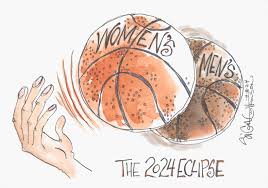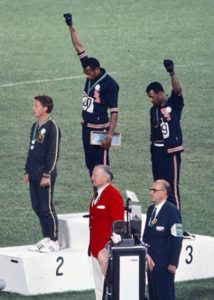1
Section One: The Fundamentals
A) What do we know about sport? What are common assumptions we make about sport and society?

|
Sports are often seen as positive, but not everyone experiences them the same way. While they can build character, they can also encourage unhealthy competitiveness or unethical behavior. The idea that sports provide social mobility is true for some, but many athletes face financial or systemic barriers. Although sports promote teamwork and unity, they can also create exclusion and discrimination. The belief that sports transcend politics is also questionable since governments use them for influence, and athletes often protest social issues. While sports are called a “universal language,” not everyone has equal access. Success in sports is not just about talent but also depends on resources and opportunities. While sports can be powerful, they are not always fair or accessible to all. |
Exercise 3: Notebook prompt
What are some other metanarratives about sport that you are familiar with? Find an image or video clip or draw something yourself that captures this idea…
So what? Why does any of this matter? Does it matter? As something we grow up with – live with – play through – we don’t often interrogate the meanings of sport, and perhaps we don’t want to.
But being aware of these assumptions and metanarratives is especially important, I would argue, because of the centrality of sport to our everyday lives, the role that sport plays in shaping our childhood and worldviews and….. [finish that thought]
|
Being aware of these assumptions and metanarratives is especially important, I would argue, because of the centrality of sport to our everyday lives, the role that sport plays in shaping our childhood and worldviews andthe role that sport plays in shaping how we see fairness, success, and competition in life. One common idea in track and field is that success comes only from hard work and talent. While effort matters, things like access to good coaching, training, and resources also play a big role. Another belief is that track and field is a solo sport, but even individual athletes rely on teams for support. There’s also the idea that overcoming struggles leads to greatness. While this is inspiring, it ignores the barriers some athletes face, like lack of funding or discrimination. This matters because sports shape our thinking from a young age. If we don’t question these ideas, we might not notice unfairness in sports and beyond. Being aware helps make sports more fair and open to everyone.
|
B) What is social justice?
Exercise 4: Padlet Prompt
Think back to the last section and try to look at some of the ideas we discussed differently. How might sport and social justice actually co-exist?
Record any images, video clips, or gifs you added to the padlet and identify a point of intersection between sport and social justice (can be an issue or a barrier or a debate or something you would like to explore in more depth in this course) . Screenshot or paste in your response below.
|
|
C) Social Justice Reading
(note: this activity is optional!)
D) KINESIOLOGY AND SOCIAL JUSTICE
Exercise 5:



Exercise 6:
What are the implications of bodies-at-risk discourse and the refusal to understand the health gap from a social justice perspective, according to the authors of this article?
|
The bodies-at-risk discourse makes health seem like a personal choice, blaming people for being unhealthy instead of looking at social and economic factors that affect health. According to Louis Harrison, Laura Azzarito, and Samuel Hodge, western societies treat health as a commodity, something people must buy and maintain to be seen as “responsible citizens.” This benefits businesses that sell health products, gym memberships, and medical treatments, turning health into a money-making industry rather than a basic human right. When we ignore the health gap—the unfair differences in health between rich and poor or different racial groups—we fail to see that systemic barriers make it harder for some people to stay healthy. Lack of access to healthcare, education, safe environments, and nutritious food all contribute to poor health. Without a social justice approach, these inequalities will continue, and health will remain a privilege instead of a right for all.
|
Section Two: Sport Feminism
Exercise 7: Notebook Prompt
What is feminism? What does it mean to you? Choose one of the images below and explain how it captures your understanding of feminism (or find one that does speak to you and paste this into your pressbook with an explanation of why it matters to you.
|
Feminism is the belief that all people, regardless of gender, should have equal rights, opportunities, and respect. It fights against discrimination and challenges unfair systems that hold women and marginalized groups back. Feminism is not about making one gender better than another—it is about fairness, freedom, and choice for everyone. The image of “We Can Do It!” represents feminism because it shows a strong woman proving that women can do the same work as men. This image, originally created during World War II, encouraged women to work in factories while men were at war. It symbolizes strength, independence, and breaking stereotypes. To me, feminism means having the power to choose your own path, whether it’s in sports, education, or work. This image matters because it reminds us that women have always been capable and deserve equal chances to succeed.
|
Exercise 8: Notes Prompt (optional)
NB: Cornell notes is a great resource that teaches effective notetaking. Unfortunately, our system can’t save notes taken in the H5P app, so this is fully optional.
Exercise 9: Crossword Activity

Exercise 10: Padlet Prompt

|

|
|



